Lord Dunsany, Philip José Farmer, and Appendix N: Advanced Readings in D&D
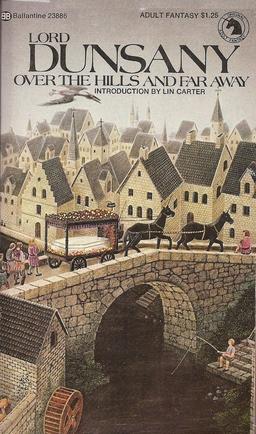 I’m still enjoying the Appendix N surveys by Tim Callahan and Mordicai Knode at Tor.com, as they read through every author Gary Gygax cited as an influence on Dungeons and Dragons, even though I’ve found lots to disagree with in their recent columns.
I’m still enjoying the Appendix N surveys by Tim Callahan and Mordicai Knode at Tor.com, as they read through every author Gary Gygax cited as an influence on Dungeons and Dragons, even though I’ve found lots to disagree with in their recent columns.
So I’m happy to continue with these re-caps here. Especially since I don’t have a lot emotionally invested in their next two subjects: Lord Dunsany and Philip José Farmer.
I have a lot of respect for Lord Dunsany, but that chiefly stems from the many fine writers who have cited him as an influence. I’ve read only a handful of his shorter works and, while I’ve enjoyed what I’ve read, he’s mostly an untapped natural resource for me.
It’s much the opposite with Philip José Farmer. I was a huge fan of his Riverworld books when I first read them decades ago. But they didn’t really hold up on re-reading 15 years later, for me.
So Farmer is a writer I largely lost interest in years ago, although I have to admit I haven’t really given fair attention to his many fantasy novels. I know his work is highly regarded, and in fact both Cynthia Ward and Christopher Paul Carey made excellent cases here for why I should pay a lot more attention to his Gods of Opar and Tales of the Wold Newton Universe series, for example.
So let’s say I have more of an open mind with both Lord Dunsany and Philip José Farmer, and I’m willing to be influenced.
With that out of the way, let’s see what Tim and Mordicai have to say.
[Click on any of the images in this article for larger versions.]
Tim gets the proceedings underway by noting that Dunsany is plowing the same fields that both Lovecraft and Gaiman work, decades later:
Yeah, the precursor to Lovecraft, definitely. There’s a looming dread. And things seem like they won’t end well, even if there’s a pastoral idealism in play that Lovecraft blatantly rejected when it was his turn to play around with these kinds of terrible worlds…
Lord Dunsany may have some proto-Lovecraft elements, but Neil Gaiman is Dunsany Jr. It’s an inescapable influence for Gaiman, even at the prose level. I don’t think Lovecraft was as effective a prose stylist as Dunsany. Not even close, really. Lovecraft has too much pseudo-Poe in him. Dunsany can pull off the heightened language, something that reads like a beautiful, strange translation of an ancient text. He’s pretty good at that sort of thing.
In The Gods of Pegana, Dunsany writes a section called “Of the Game of the Gods” and the “game” involves playing with men and beasts. As in, playing with them from the skies above, like pieces on a gameboard, like that scene from Clash of the Titans that everyone cool remembers. Dunsany doesn’t describe any dice-rolling, but he’s describing a fundamental component of Dungeons and Dragons itself: pitting little tiny men against little tiny (but proportionally bigger) monsters! That’s built right into his mythology. Like a pro.
Nice. I have no idea how accurate Tim’s description is, but I can tell you it certainly sounds interesting.
For his part, Mordicai compares Dunsany to both Lovecraft and Robert E. Howard:
You know what I’m into? Plays of Gods and Men… it is like, an H.P. Lovecraft story, except the first half of it is like a Robert E. Howard story? Actually, that is it, on the nose; the epic history of wonder and dark magic in a forgotten prehistoric kingdom sets the stage for the unknown horrors that a bunch of gobsmacked Europeans get themselves into by meddling with things humankind was not meant to know. And it is gorgeous…
Here at last Tim and Mordicai have accomplished what I’ve been hoping they’d do since they started this project over six months ago: genuinely pique my interest in a writer I have obviously unfairly neglected.
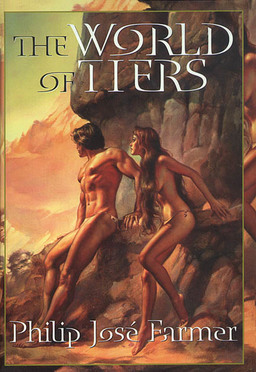 Fairly or unfairly, I rarely find myself interested in a writer until I see evidence that she speaks to a modern audience (perhaps that’s why I perpetually find myself drawn towards more modern editions — or at least, editions published in my lifetime), and that’s exactly what Tim and Mordicai have demonstrated here. I can see that I need to spend some quality time with Lord Dunsany this holiday season.
Fairly or unfairly, I rarely find myself interested in a writer until I see evidence that she speaks to a modern audience (perhaps that’s why I perpetually find myself drawn towards more modern editions — or at least, editions published in my lifetime), and that’s exactly what Tim and Mordicai have demonstrated here. I can see that I need to spend some quality time with Lord Dunsany this holiday season.
Read Mordicai and Tim’s complete review here.
And now we come to Philip José Farmer.
Unlike Dunsany, there was a lot of chatter about Farmer in my various reading circles during my formative years. In addition to his famous Riverworld series, he was also known for The World of Tiers, Dayworld, his Doc Savage and Tarzan novels, and many standalone novels like The Stone God Awakens (1970) and The Unreasoning Mask (1981).
More recently, I was impressed by what I was able to sample from Farmer’s posthumous collection Up the Bright River, although that didn’t really do justice to his many successful fantasy series.
Mordicai, working solo, discusses The World of Tiers, and I’m pleased to see it. I’ve been curious about this series ever since I saw Boris’ cover to the Science Fiction Book Club edition in the late 70s, featuring a mostly-naked hero and heroine in a fantastic landscape of bizarre canyons and ape men. Apes and beautiful naked women… that’s a powerful combination when you’re fifteen, let me tell you.
Here’s Mordicai with a more balanced analysis of The Maker of Universes, the first novel in The World of Tiers:
The premise of The Maker of Universes is pretty simple… The main character starts out in a False Eden and has to climb up the pillars of the world, from plate to plate, from one flat world to the next, trying to get to the peak where the tyrant god-king lives. Because it is all fabricated and created according to whim…well, the “rules” of plausibility are altered. Not just physics, either; history and anthropology, too. Take for instance, Amerind.
See, what is the Amerind tier but a bunch of “pulp Western” clichés. In another book, that might have caused some consternation; after all, fanciful appropriation of real world cultures is not my idea of a good time. Here though, Farmer side-steps those issues by…well, making the people of Amerind, and of every other tier be synthetic “cultures.” The Maker of the World of Tiers wanted a pseudo-Greek land full of lab experiments, he wanted a pulp Wild West nation-world, he wanted a “best of feudalism” tier and a “Robert E. Howard’s fallen Atlantis” tier. The Maker is the kind of DM who runs pre-made settings but doesn’t want to have to pick just one.
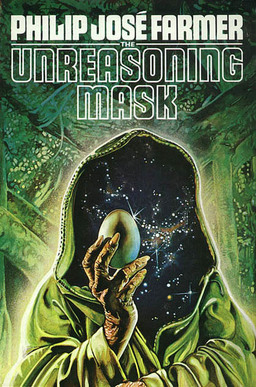 In a rather brilliant aside, Mordicai points out how The Maker of Universes can give clever DMs the tools they need to create some pretty diverse and innovative settings:
In a rather brilliant aside, Mordicai points out how The Maker of Universes can give clever DMs the tools they need to create some pretty diverse and innovative settings:
Besides which, there are the occasional flourish that, between you and me, are ripe for a clever DM to borrow. Maybe my favorite — and probably old hat to some — are the idea of Great Plains centaurs. A host of Nez Perce-inspired Appaloosas in Maztica, driving the PCs in toward the ancient ziggurat they must explore; put that in along side Aztec-y were-jaguars, have the expanding empire of Law be influenced by the Iroquois Confederacy…see, just that one little notion and I’m already dreaming up whole campaigns…
This isn’t a Player’s novel; this is a DM’s novel. I’ve noticed a difference in this re-read; stories like Howard’s Conan or the Lankhmar books are character driven in a way that creates archetypes, that sketches out behaviors and well, class roles. You want to know the default setting for “Barbarian” is? Conan is a pretty good starting place. Other books are more like primers for Dungeon Masters, stories like The Moon Pool and yes, even L. Sprague de Camp and Fletcher Pratt; books that show off settings, or showcase how to come up with “big ideas” on the fly. The World of Tiers is the latter; it is a good teaching aid on how to get past the assumptions of a spherical, physical model, and how you can slide in ideas — like “I sort of want to run this adventure in Boot Hill…” — while making it work.
Again, that’s a pretty compelling reason to dip into The World of Tiers. (Like I don’t have enough to read.)
Read the complete article here.
All in all, I quite enjoyed these two entries in the Appendix N survey series. I’m looking forward to the next ones.
We last covered Mordicai and Tim’s journey into Appendix N on December 15, when they discussed H.P. Lovecraft and A. Merritt.
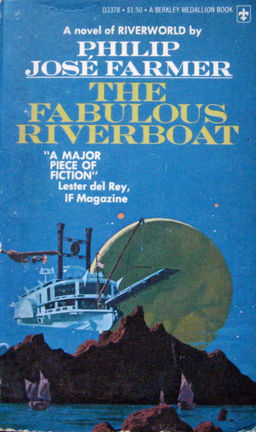 The list of authors they’ve covered includes:
The list of authors they’ve covered includes:
Leigh Brackett and J.R.R. Tolkien
Margaret St. Clair and Andrew Offutt
Lord Dunsany and Philip José Farmer
H.P. Lovecraft and A. Merritt
Manly Wade Wellman and Fletcher Pratt
Fredric Brown and Stanley G. Weinbaum
John Bellairs and Fred Saberhagen
Jack Williamson and Lin Carter
Andre Norton and Michael Moorcock
L. Sprague de Camp, Fletcher Pratt, and Gardner Fox
Roger Zelazny and August Derleth
Jack Vance
Fritz Leiber and Edgar Rice Burroughs
Sterling E. Lanier
Poul Anderson
Robert E. Howard
See the complete list here.
Next up in the Advanced Readings in D&D series: Margaret St. Clair and Andrew Offutt.
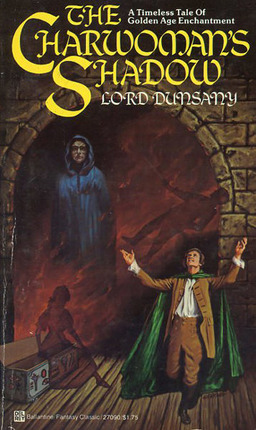
I read the first three World of Tiers novels way back in the day when they were Ace paperbacks.
I was spurred to do so by Roger Zelazny’s rave blurb on the cover of the third one…A Private Cosmos
http://gallery.unrealspawnboard.com/albums/userpics/10006/pjf-52.png
I recall enjoying the hell out of them and thinking they made a solid companion to Zelazny’s Amber series.
Man, I really need to re-read those books, see if they’re anywhere near as good as I remember.
Maybe even finally get around to the last couple volumes. It’s about time.
My favorite Farmer is probably Dark is the Sun, but that’s much more useful in a Gamma World context. (Not that it had any influence — I think it might have actually come out after the game? — but it’s the sort of feel I’d like the campaign to have. Well, that and Thundarr.)
I read the World of Tiers books quite a while ago and although my memories are fuzzy, I enjoyed them.
I read Riverworld even longer ago. I remember liking the first three or four books, then being really upset when in the last couple volumes of the series he completely rewrote the back story.
I’ve never been a big Dunsany fan, but to be fair, I’ve only read one novel and a handful of shorter works. That being said, I am a Gaiman fan, and had never seen the connection until now, so maybe I need to give Dunsany another try.
I’m a huge Dunsany fan but, to be fair, I think he works better in short stories than at novel length and I can see how for some readers a little of his style can go a long, long way.
> I recall enjoying the hell out of them and thinking they made a solid companion to Zelazny’s Amber series.
> Man, I really need to re-read those books, see if they’re anywhere near as good as I remember.
John,
Wow, that is an endorsement. My reading card for 2014 is already pretty crowded, but I may just have to see if I can fit WORLD OF TIERS in.
I’m aware that I was a very different reader 30 years ago, and I enjoyed very different things. But I’ve always been curious if I would still enjoy THE CHRONICLES OF AMBER or THE FUZZY PAPERS (just for example) if I read them for the first time today, without the warm glow of nostalgia that shields the books when I attempt to assess them objectively now.
WORLD OF TIERS sounds like a great test case. It sounds like exactly the kind of thing I would have loved at 15, as I was reading those other books.
> My favorite Farmer is probably Dark is the Sun, but that’s much more useful in a Gamma World context.
Joe,
Ah! Forgot DARK OF THE SUN. Thanks for the reminder.
It has a GAMMA WORLD feel, huh? Wish I’d known that 20 years ago. One more for the reading list. Man, I’m getting a lot of great Farmer recommendations out of this article.
> I’ve never been a big Dunsany fan… I am a Gaiman fan, and had never seen the connection until now
Ty,
Neither had I, to be honest. The thing I most enjoy about Dunsany is that his stories are so short, and pack such a wallop. Perfect for when I have only 10 minutes. I should keep one of his collections by my beside.
> I’m a huge Dunsany fan but, to be fair, I think he works better in short stories than at novel length
I have to admit I’ve never read any of his novels… though I’m tempted by THE KING OF ELFLAND’s DAUGHTER. That looks like a great book.
[…] Dunsany’s later series about Jorkens concerns a man who tells tall tales in a bar for drinks. These stories were the precursors of and influences on Arthur C. Clarke’s White Hart, L. Sprague de Camp and Fletcher Pratt’s Gavagan’s Bar, and Sterling E. Lanier’s Brigadier Ffellowes. A further discussion of Dunsany’s influence can be found here. […]
[…] last covered Mordicai and Tim’s journey into Appendix N on December 30, when they discussed Lord Dunsany and Philip José Farmer. The list of authors they’ve covered so far […]